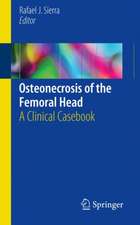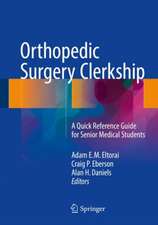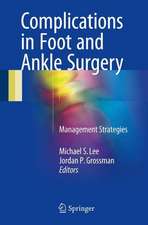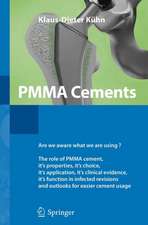Bone Cements: Up-to-Date Comparison of Physical and Chemical Properties of Commercial Materials
Autor Klaus-Dieter Kühnen Limba Engleză Paperback – 18 sep 2011
Preț: 354.58 lei
Preț vechi: 373.24 lei
-5%
Puncte Express: 532
Preț estimativ în valută:
62.77€ • 72.91$ • 54.38£
62.77€ • 72.91$ • 54.38£
Carte tipărită la comandă
Livrare economică 02-16 martie
Preluare comenzi: 021 569.72.76
Specificații
ISBN-13: 9783642641152
ISBN-10: 3642641156
Pagini: 292
Ilustrații: XIV, 272 p.
Dimensiuni: 155 x 235 x 15 mm
Greutate: 0.41 kg
Ediția:Softcover reprint of the original 1st ed. 2000
Editura: Springer Berlin, Heidelberg
Colecția Springer
Locul publicării:Berlin, Heidelberg, Germany
ISBN-10: 3642641156
Pagini: 292
Ilustrații: XIV, 272 p.
Dimensiuni: 155 x 235 x 15 mm
Greutate: 0.41 kg
Ediția:Softcover reprint of the original 1st ed. 2000
Editura: Springer Berlin, Heidelberg
Colecția Springer
Locul publicării:Berlin, Heidelberg, Germany
Public țintă
Professional/practitionerCuprins
1 Introduction and Scope.- 2 Test Material and Applied Methods.- 2.1 Material.- 2.2 Applied Test Methods.- 3 Results and Discussion.- 3.1 PMMAs as Bone Cements.- 3.2 Descriptions of the Cements.- References.
Textul de pe ultima copertă
The cemented hip prosthesis is one of the most frequent operations worldwide in the orthopaedic field. In these operations bone coments are used to fix artificial joints filling the free space between bone and prostheses. As an elastic zone the cement is able to buffer the forces affecting the bone. Though chemically all cements on the market are basing on the same main substance (methyl methacrylate = MMA) they differ in their physical and chemical properties. The rising number of bone cements on the market makes it difficult for the surgeon to make an appropriate choice for good clinical long-term results. The present book is a complete, detailed comparative presentation of all relevant physical and chemical properties of the bone cements on the market.














